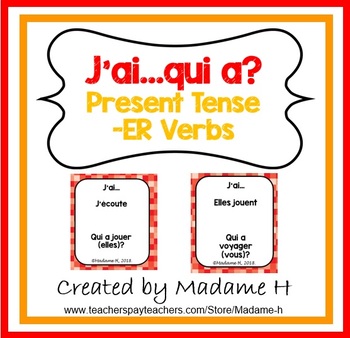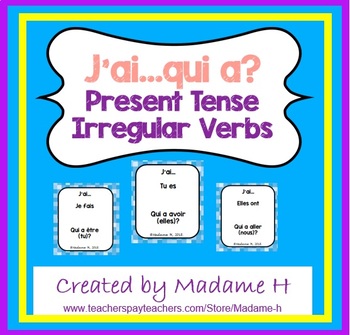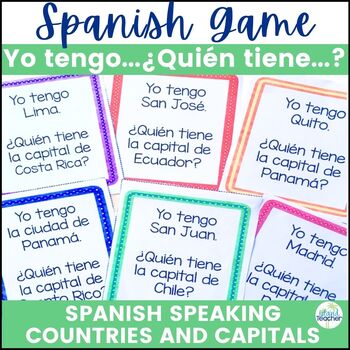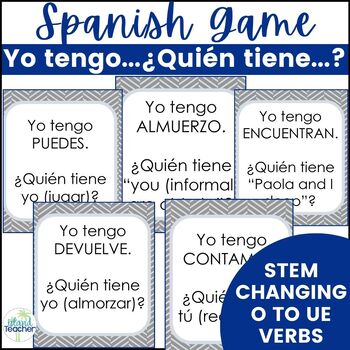I have...who has is a great game to use in World Language classes to help students hone in on their speaking, listening, and pronunciation skills. Have you ever wondered what else can be done with this game? Here is a list of 6 different ways you can get more out of this simple game with your students.
1. Turn It Into a Class Competition
Distribute the cards to students making sure that all cards have been passed out. Set a timer and record the time it takes for the class to move through every card. Write this time on the board. Collect and redistribute the cards. Play the game again and see if the class can finish this round faster than the previous time on the board. This can also be done as a competition between different classes if you teach the same course multiple times throughout the school day.
2. Play In Small Groups
Instead of playing I have...who has as a whole class game divide your students into two or more groups. Provide each group with a set of cards. Students will have more than one card if you choose to play this way. On the plus side, they will receive more practice. This can also be a great way for teams to compete. See which group can finish first!
3. Extra Individual Practice
Have individual students grab a set of cards and place them in order from start to finish to practice the concept individually. The student can choose to place the cards in rows in order or play it on the ground in a wide open space to create a giant circle from start to finish.
4. Presentational Practice
Combine two to three sets of the same game and redistribute the cards to students. Have them use the answer part to create complete sentences with the information on the cards. They can then turn these statements in to receive a homework or classwork grade.
5. Put The Cards In Order
Use a dry erase marker and write a number on the top corner of the card. Be sure to use random numbers and to not write them in order. Then, place the cards in order and write down on a post-it note or other piece of paper the correct order of the cards from start to finish. Keep this piece of paper with you. Distribute one set of cards to small groups of students and have them work together to place the cards in order and to write down the numbers from the cards. The students should then pick a representative from their group to bring their list of numbers to you to check. The first group with the correct order wins!
6. Review for Upper Levels
Play the same sets you play with lower levels with your upper level students, but require the students to respond in complete sentences as opposed to just giving the answers. Advanced students will not only have to produce the correct answer and a logical sentence, but they will also have to listen closely to distinguish the portion that would appear at the top of another card.
These are just a few tips for getting the most out of your I have...who has? sets for class. See below for some already created sets that you can use right away with your students. How have you incorporated this unique game in your own classes?
3. Extra Individual Practice
Have individual students grab a set of cards and place them in order from start to finish to practice the concept individually. The student can choose to place the cards in rows in order or play it on the ground in a wide open space to create a giant circle from start to finish.
4. Presentational Practice
Combine two to three sets of the same game and redistribute the cards to students. Have them use the answer part to create complete sentences with the information on the cards. They can then turn these statements in to receive a homework or classwork grade.
5. Put The Cards In Order
Use a dry erase marker and write a number on the top corner of the card. Be sure to use random numbers and to not write them in order. Then, place the cards in order and write down on a post-it note or other piece of paper the correct order of the cards from start to finish. Keep this piece of paper with you. Distribute one set of cards to small groups of students and have them work together to place the cards in order and to write down the numbers from the cards. The students should then pick a representative from their group to bring their list of numbers to you to check. The first group with the correct order wins!
6. Review for Upper Levels
Play the same sets you play with lower levels with your upper level students, but require the students to respond in complete sentences as opposed to just giving the answers. Advanced students will not only have to produce the correct answer and a logical sentence, but they will also have to listen closely to distinguish the portion that would appear at the top of another card.
These are just a few tips for getting the most out of your I have...who has? sets for class. See below for some already created sets that you can use right away with your students. How have you incorporated this unique game in your own classes?





No comments:
Post a Comment
Note: Only a member of this blog may post a comment.